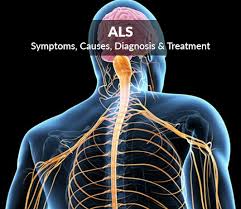Highlights
- •Large-scale generation and differentiation of control and ALS iPSCs to motor neurons
- •Patient sex and cell culture composition are significant sources of variation
- •Male ALS cultures have more motor neurons and enrichment of stress-related pathways
- •Deposition of data and cell lines into public repository with additional multi-omics
Summary
Using induced pluripotent stem cells (iPSCs) to understand the mechanisms of neurological disease holds great promise; however, there is a lack of well-curated lines from a large array of participants. Answer ALS has generated over 1,000 iPSC lines from control and amyotrophic lateral sclerosis (ALS) patients along with clinical and whole-genome sequencing data. The current report summarizes cell marker and gene expression in motor neuron cultures derived from 92 healthy control and 341 ALS participants using a 32-day differentiation protocol. This is the largest set of iPSCs to be differentiated into motor neurons, and characterization suggests that cell composition and sex are significant sources of variability that need to be carefully controlled for in future studies. These data are reported as a resource for the scientific community that will utilize Answer ALS data for disease modeling using a wider array of omics being made available for these samples.
Introduction
The use of induced pluripotent stem cell (iPSC)-derived motor neurons to model genetic and sporadic forms of amyotrophic lateral sclerosis (ALS) is founded on the idea that the human-specific nature of these models will help to elucidate molecular mechanisms of disease and provide a paradigm for drug screening and discovery.1 Although it may be possible to use a smaller number of patient lines when modeling genetic forms of ALS, where isogenic lines can be produced as controls,2
this becomes more complicated when modeling sporadic ALS (SALS) with mixed etiologies. One study from Japan has shown that 32 ALS patients compared with 6 controls was sufficient to distinguish specific subsets of SALS patients.3 However, differences in ethnic diversity between the USA and Japan may create a wider variation in iPSC biology that could increase the number of patients required to resolve additional disease-specific mechanisms.4 In order to overcome and inform these issues for a diverse population of patients, a far larger set of iPSC lines and their differentiated motor neurons are required. Answer ALS (https://www.answerals.org) was established with the goal of making 1,000 iPSC lines from patients with all forms of ALS that have deep clinical data along with whole-genome sequencing (WGS) and multi-omics on differentiated motor neurons.5
In this study, 433 iPSC lines were differentiated into motor neurons using an optimized 32-day protocol selected based on extensive discussions with the scientific community.6 Neuronal cell marker staining and gene expression patterns were analyzed in motor neuron cultures. Exploratory analyses and modeling with patient covariates were then used to reveal the major confounding variables and challenges associated with these large patient-derived iPSC differentiation studies as resources for the community. Interestingly, ALS participants generated significantly more motor neurons than control patients based on Islet 1 (ISL1) staining, but unsupervised principal component analysis (PCA) showed no clear overall separation of ALS versus control participants, and very few differentially expressed genes (DEGs) were detected. However, the correlation of principal components (PCs) with biological and technical covariates revealed high correlations of various PCs with the percentage of S100B+ cells. Additional subsets of genes were highly correlated with the staining data and other experimental and patient-specific covariates, such as iPSC origin (T cell versus non-T cell), C9orf72 expansion, and a large number of residual genes that represent patient-to-patient variability likely driven by genetic differences. Interestingly, among the most prominent covariates was sex, which drove a transcriptomic signature that could completely separate males and females and was associated with a large number of differentially expressed autosomal and sex-linked genes.
Results
Characterization of the main resource
The experimental design is summarized in Figure 1A and the concept and an overview of the Answer ALS project has been recently published.5 For this study, peripheral blood mononuclear cells (PBMCs) were collected from 433 individuals (Table S1) enrolled in the Answer ALS clinical study and reprogrammed into iPSCs using established methods.7 Within the ALS patient lines, there was the expected distribution of self-reported disease-causing mutations in genes such as C9orf72 and superoxide dismutase 1 (SOD1), with the majority of cases being sporadic with no known disease-causing mutations (Figure 1B). WGS revealed similar numbers of pathogenic/likely pathogenic (P-LP) and in silico predicted damaging (IS-D) coding variants across the genomes of healthy control, SALS, and familial ALS (FALS) patients (Table 1). However, more subjects in the FALS group harbor P-LP (28.1%) and IS-D (40.6%) variants in 33 ALS-associated genes (see STAR Methods for genes) compared with other patient groups. Unexpectedly, several healthy control participants also carry P-LP (15.4%) or IS-D (9.6%) coding variants in one or more of the ALS genes, similar to the proportion of SALS patients carrying P-LP (14.6%) and IS-D (11.1%) ALS variants….







